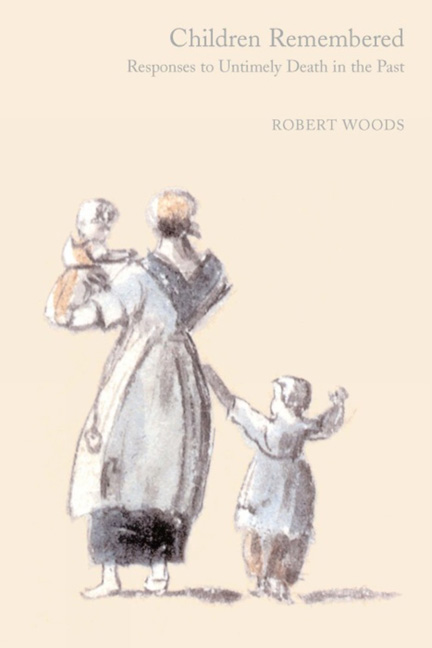Book contents
- Frontmatter
- Dedication
- Contents
- List of Tables
- List of Figures
- List of Illustrations
- 1 Introduction: ‘the lines of life’
- 2 Après la mort des enfants
- 3 Mortality, Childcare and Mourning
- 4 Children in Pictures and Monuments
- 5 Emotions and Literature
- 6 Poems, Mainly of Child Loss
- 7 The Vocabulary of Grief
- 8 Parallel Histories: Experience and Expression
- Acknowledgements
- Notes on the Sixty-Nine Poems
- Notes
- Select Bibliography
- Index
4 - Children in Pictures and Monuments
- Frontmatter
- Dedication
- Contents
- List of Tables
- List of Figures
- List of Illustrations
- 1 Introduction: ‘the lines of life’
- 2 Après la mort des enfants
- 3 Mortality, Childcare and Mourning
- 4 Children in Pictures and Monuments
- 5 Emotions and Literature
- 6 Poems, Mainly of Child Loss
- 7 The Vocabulary of Grief
- 8 Parallel Histories: Experience and Expression
- Acknowledgements
- Notes on the Sixty-Nine Poems
- Notes
- Select Bibliography
- Index
Summary
Pictures, especially paintings and even some photographs, have proved a tantalising source ofevidence for historians. Their attraction is obvious; they appear to give an immediate visualisation of what it was like in the past, how our ancestors looked, how they lived, significant events, their environment, and so forth. But several generations of art historians have also counselled caution, advice that has generally been taken seriously by other specialists to the extent that some would not now regard visual images as offering suitable materials for historical analysis. This chapter takes the advice offered by Francis Haskell, however, and adopts the middle ground between uncritical over-optimism (paintings as documents) and the belief that only text documents will do (art is for the tourists). ‘What we choose to call art is indeed best interpreted by the historian when it is studied in conjunction with other available testimony, but it does have a “language” of its own which can be understood only by those who seek to fathom its varying purposes, conventions, styles and techniques.’114 The business of fathoming needs to be taken very seriously, therefore, but it is also best taken with a considerable amount of imagination and not a little speculation. Here we shall consider 20 paintings, mostly of children, sometimes of family groups or a single parent and child, executed between the 1520s and 1901 by Europeans or Americans. Although each will be considered in its own right, the principal objective will be to link them into a series so that some meaningful observations can be made concerning the ways in which the language of representation changed, and thereby the purpose intended for the image by contemporaries. Although the analysis will focus on the images selected for display in this hypothetical gallery, other paintings, monuments and pictures will also be referred to in passing. In general, original photographic images will not be considered since they are only available for the last 150 years or so and the series will not be extended into the twentieth century when film, television and video transformed our visual culture.
Historians, pictures and the deceased
Andor Pigler's great survey ‘Portraying the dead’ sets out to catalogue the various approaches to memorialising the dead adopted by European artists in past centuries.
- Type
- Chapter
- Information
- Children RememberedResponses to Untimely Death in the Past, pp. 61 - 94Publisher: Liverpool University PressPrint publication year: 2006



